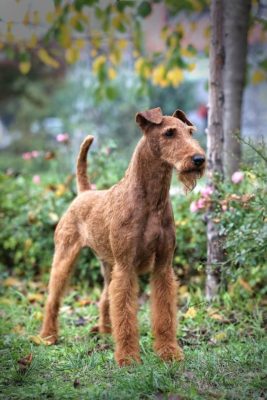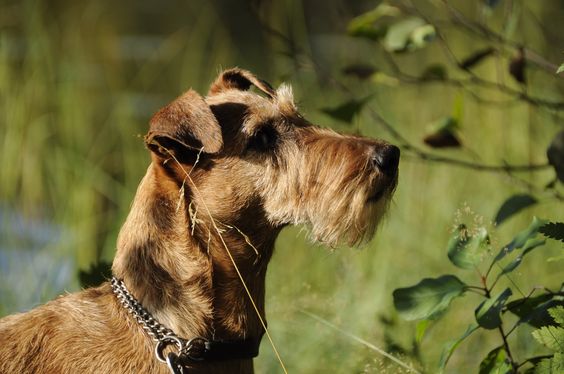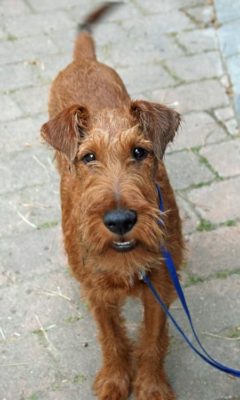Irish Terrier
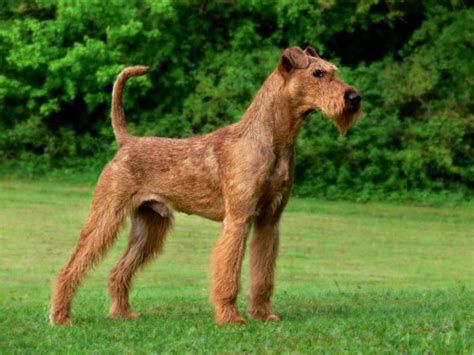
Dogs can have frequent mood swings, but they are still cheerful and energetic most of the time. They are very attached to their owner and spend a lot of time with him. Even though it is not a fighting dog and has no innate aggressiveness, it is always ready to stand up for its territory and family. With great fervor, the Irish Terrier takes on any job.
Table of Contents
Breed Information
| Another Name | Irish Red Terrier |
| Origin | Ireland |
| Height | Males 43-46 cm Females 41-46 cm |
| Weight | Males 12-20 kg Females 11.4-20 kg |
| Fur | Medium |
| Color | Red, wheat |
| Lifespan | 13-15 years |
| FCI Classification | Terriers |
| Group | Dogs for kids, dogs for the apartment |
| Price | $400-900 |
Breed Photos
Origin History
The origin of the breed dates back to the middle of the 19th century. The Irish Terrier’s ancestor was a black and tan stiff-haired terrier, which was used for hunting rats in England. Beginning in 1875, the breed participated in dog shows. Five years later, the species becomes officially recognized.
It is important to note that long ago, ancestors had a slightly different physique, were not as athletic as modern dogs. During World War I, the Irish Terrier was actively used as a liaison dog. They were very balanced, calm and helped in the search for mines.
After the war, the number of Irish Terriers declined dramatically. Dog connoisseurs tried to regain interest in the breed and organized private shows for the Irish Terrier. Now the species is widely widespread all over the world and is a real pride of the Irish.
Appearance
The Irish Terrier is of medium size and athletic build. The dog can reach a height of 46 cm and a weight of up to 20 kg.
The dog has long legs, a strong back, and is well muscled. The unique coat of the Irish Terrier protects the dog from various injuries, scratches, and cold. It also has dirt-repellent features and is impervious to water.
The nasal lobe is always black; the eyes are small and also dark. The ears are small, triangular, slightly drooping toward the cheekbones. The neck is high and proudly set, long. The hind limbs are powerful and massive.
The tail is usually not cropped; it is planted high, slightly elevated, but does not exceed the backline. The coat can be red, golden, or wheat color.
Character
Dogs can have frequent mood swings, but they are still cheerful and energetic most of the time. They are very attached to their owner and spend a lot of time with him. Even though it is not a fighting dog and has no innate aggressiveness, it is always ready to stand up for its territory and family. With great fervor, the Irish Terrier takes on any job.
They can participate in different competitions because they have competitive qualities.
They treat children well and love to play with them. But cats are often perceived as the target of destruction, so it is essential to train the dog to behave appropriately with other animals from an early age.
Care
The Irish Terrier can easily live in an apartment or country house. But it is worth remembering about frequent and active walks. The dog should not be kept on a chain or in a kennel.
About twice a year, it is recommended that your dog be groomed and trimmed. Regularly comb and clean the hair from tangles. After walks, you can wipe his paws with a damp towel. In summer, the Irish Terrier can bathe in a lake or river. You can equip a small pool on the territory.
It is not recommended to bathe often. Several times a year is enough, and it is essential to remember about a special shampoo for hard-haired dogs.
It is enough to wipe ears and eyes once a week with a soft cloth or cotton pad. The Irish Terrier’s teeth should always be white, so it is important to brush them once a week with a brush or fingertip.
Training
The main point when training a dog is to arouse interest in a new activity. Usually, these dogs are taught different sports games, such as agility or dog frisbee.
In the first months, the pet is curious and can easily assimilate a lot of information. This is when it is recommended to start training. In the beginning, it is best to spend a lot of time socializing with the puppy. Walk outside a lot, introduce the terrier to other animals and people.
Common Diseases
The most common diseases of the Irish Terrier:
- hip dysplasia;
- hypothyroidism;
- Willebrand-Dian disease.
Also, recently they have started noticing hyperkeratosis of the paw pads in the dog. When choosing a dog, it is important to find out carefully about his pedigree.
Nutrition
It is recommended to feed natural food. To do this, it is important to compose a diet and diversify it. Meat, by-products, fruits, vegetables should constitute an essential part of the diet. If you give the pet fish before, it should be cleaned of bones. Additionally, vitamins can be given.
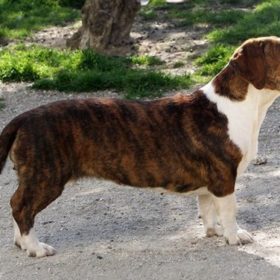 Drever
Drever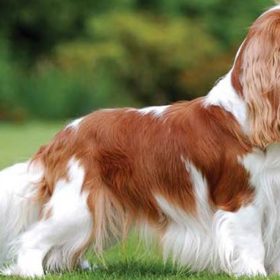 Cavalier King Charles Spaniel
Cavalier King Charles Spaniel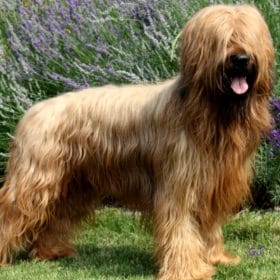 Briard
Briard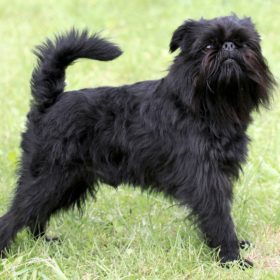 Griffon Belge
Griffon Belge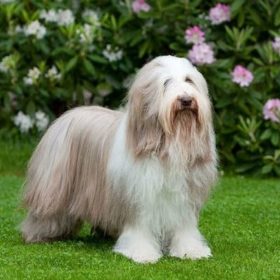 Bearded Collie
Bearded Collie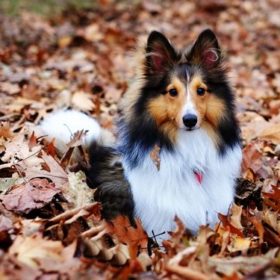 Shetland Sheepdog
Shetland Sheepdog